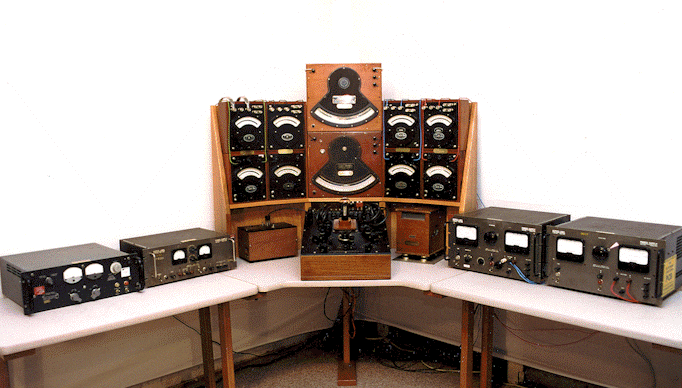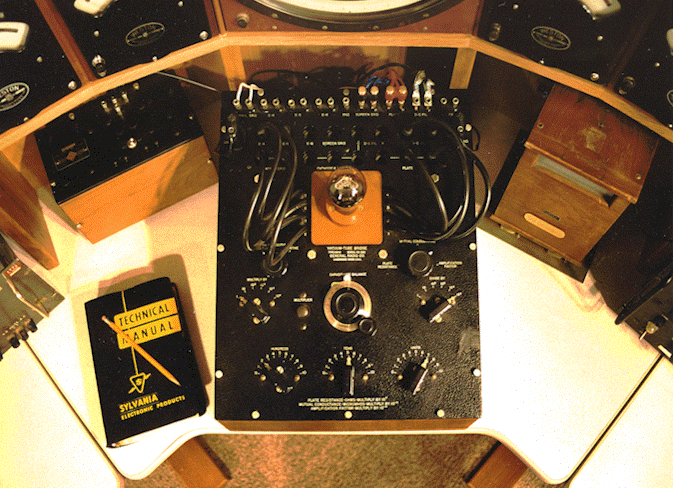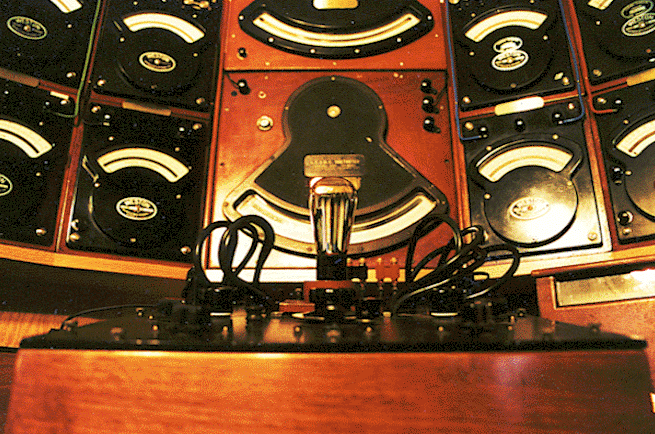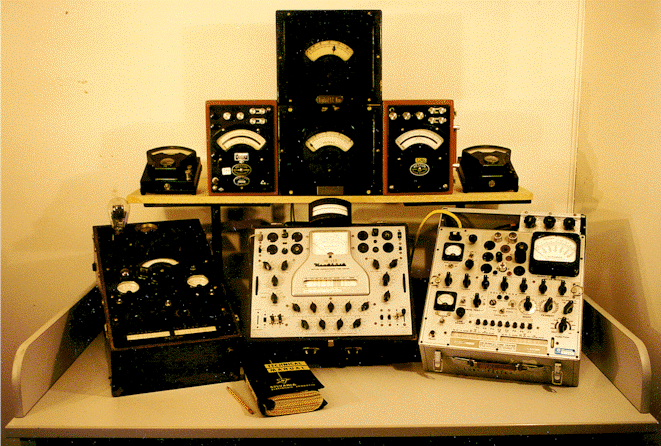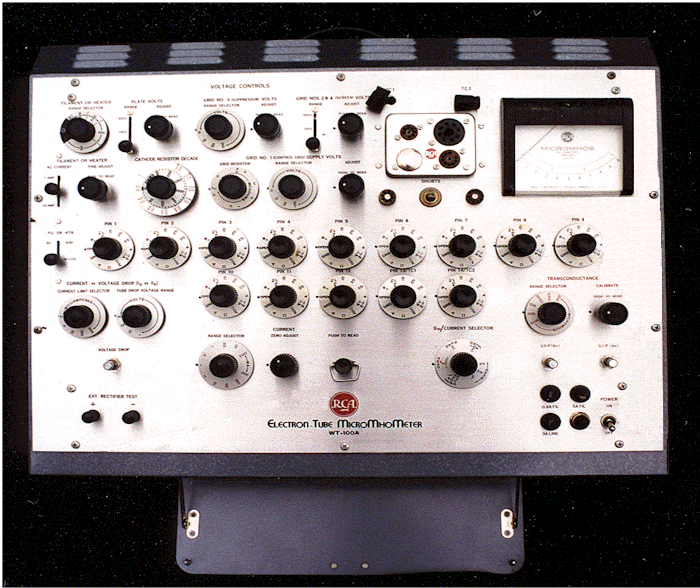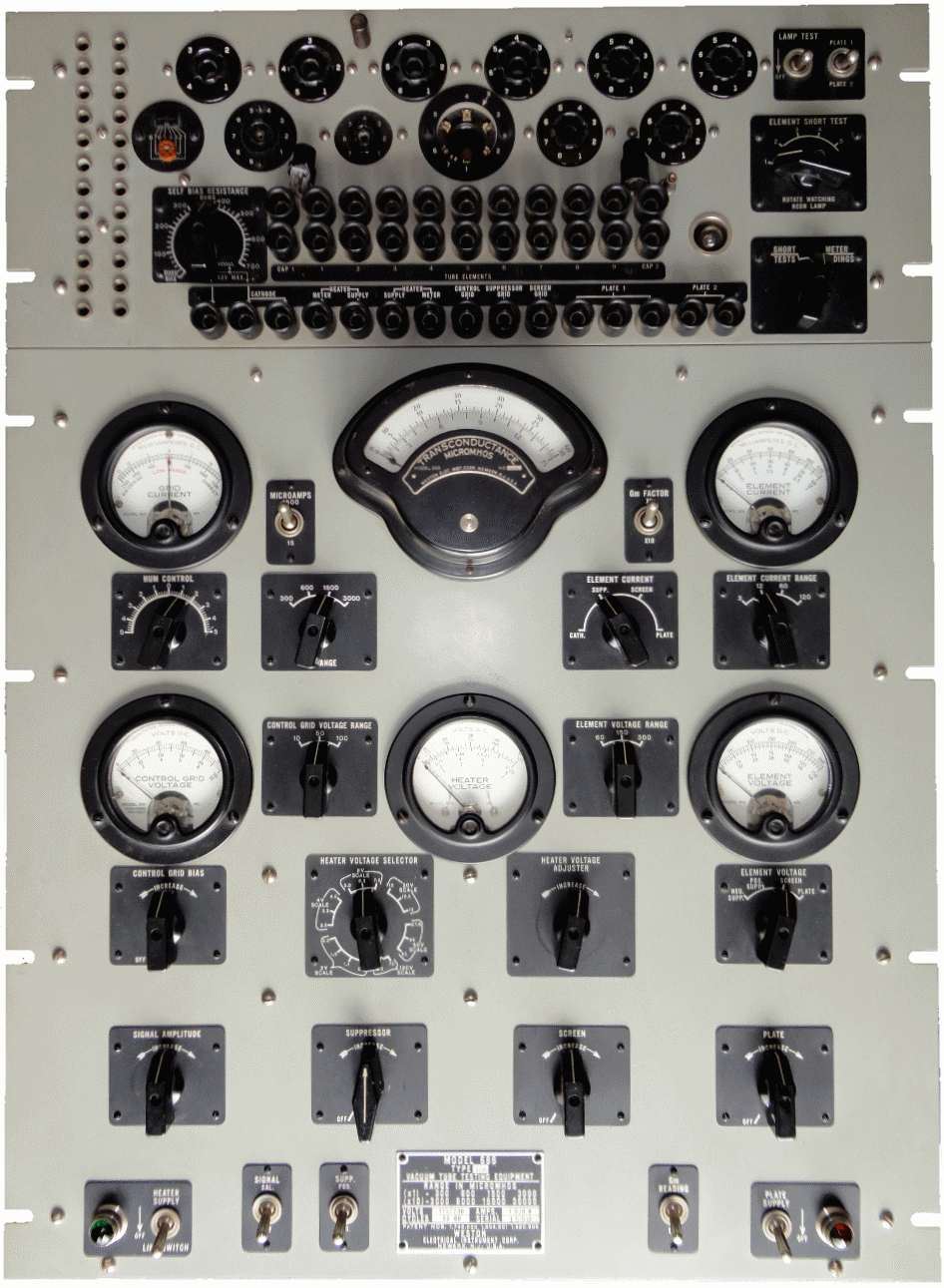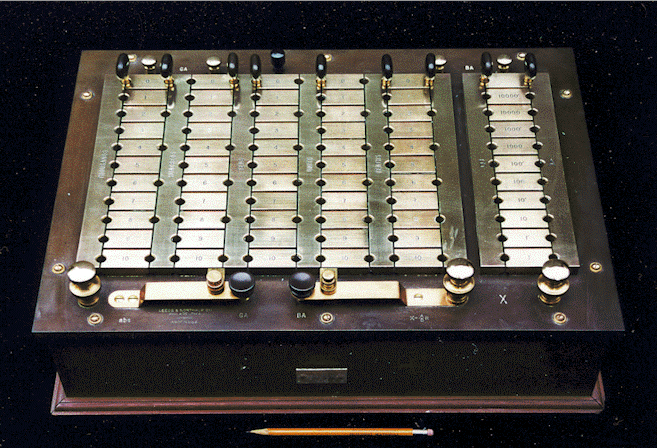The VTS Testing Laboratory
Here you will find a few highlights of the VTS Analog laboratory. This is one of, if not the, finest and most complete audio-tube testing facilities in the world. These instruments are calibrated to the same National Institute of Standards (Test #910675) that the original manufacturers used. This gives me a long term accuracy and absolute calibration to the original specifications!
The VTS Grand Master Analog Tester
Primary Testing Console
Featuring Weston and General Radio
The Weston Model 329 & 370 analog meter and General Radio Tube Bridge used in the primary testing console are the all time world analog standards. The meters in the main bank alone weigh in at 135 pounds. The entire test console with power supplies tips the scale at 1,058 pounds. For size perspective, the tube in the bridge is an Sylvania Globe 45 output tube.
Primary Testing Console Close-Up
Laboratory grade tube rigs have separate plug in modules for the lowest possible capacitance (as compared to the high capacitance of the many paralleled sockets in a typical service tester). Here the 4 pin module holds a Sylvania Globe 45 tube. VTS rejects many inferior tubes that would be passed on and sold as good by others.
Primary Testing Console Close-Up
The warm colors and smooth lines of this truly classic and elegant equipment can soften the harsh monotony of many long hours spent in the lab.
The VTS Secondary Testing Console
Featuring Weston, Western Electric, and Hickok
The secondary tube testing console features (L to R) a WESTON 788 Vacuum Tube Analyzer (Cir. 1939) with an added WESTON Model 301 meter for plate current (cir. 1901). (the build on this unit is exceptional, like a Swiss watch! Flawless even after 60 years! Where is all the plastic crap there are making today going to be?....at the bottom of the DUMP!) The Heath TT-1 in the center is the early version with the WESTON meter as compared to the later SIMPSON meter. This unit also is equipped with external WESTON metering seen above the unit. The third tester is a flawless AT&T Long Lines calibrated WESTERN ELECTRIC KS-15750-L1 built by Hickok. For size perspective the tube in the WESTON 788 that appears small is a Globe 50.
The VTS Laboratory Tube Analyzers
RCA WT-100-A
The RCA WT-100-A tester is a more modern (Cir. 1960's) unit that was developed for, and is particularly good at testing large batches of the same tube. It is very good at catching some of the later high-tech (i.e. troublesome) tubes like the 6DJ8, etc...in the act of misbehaving. This unit is large, complex, and though it only has one meter almost all of the controls are multi-task types that go up and down in multiple steps and turn around. This model of tester was reportedly used, at times, on the production line at RCA in Harrison, New Jersey.
Weston 686, Type 10, Tube Analyzer
Presenting the Weston 686, Type 10, Tube Analyzer. Another balanced bridge type tester that actually tests the tubes under real world conditions! It's very time consuming to set this up and utilize but the results are worth it!
The VTS Primary Resistance Decade
L&N Anthony-Patterson Wheatstone Bridge
This L&N Anthony-Pattern Wheatstone Bridge serves as the external calibration decade and bridge for the VTS Laboratory. This gives me the ability to confirm actual performance measurements of any decade in the lab with "Rock of Gibraltar" short and long term stability. (As compared to my imitators who stick the tube in whatever tester they have on hand and hope for the best.) Why are things so different at VTS? Because VTS was never started as a "get rich quick" scheme or "let's jump on the bandwagon" company.
[gap size="10px"]
[clear]

